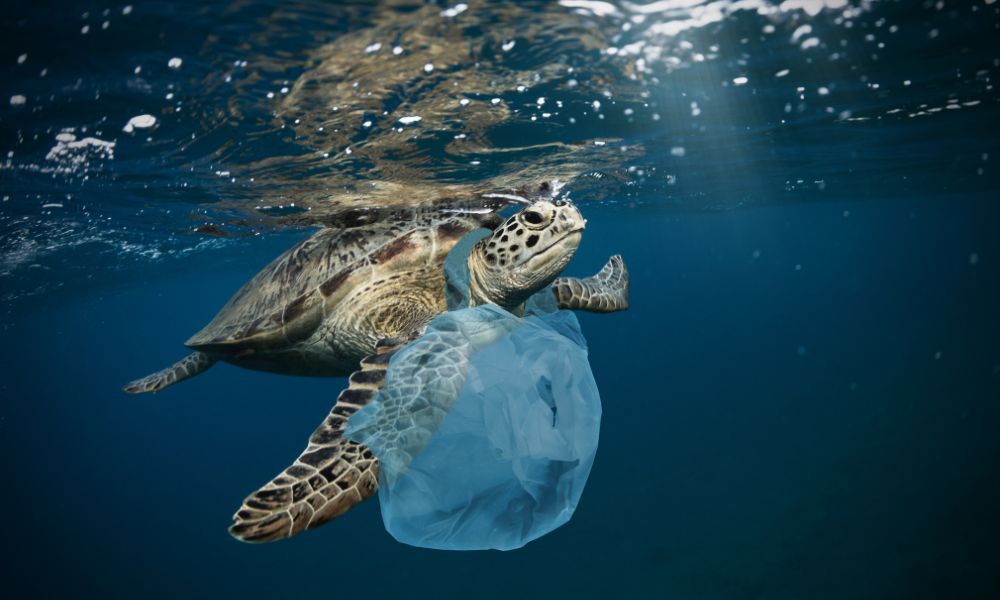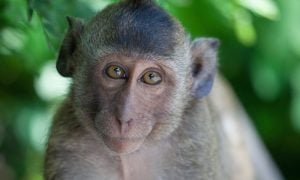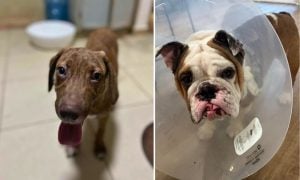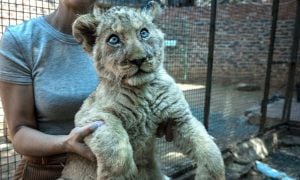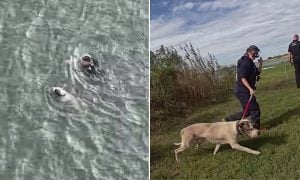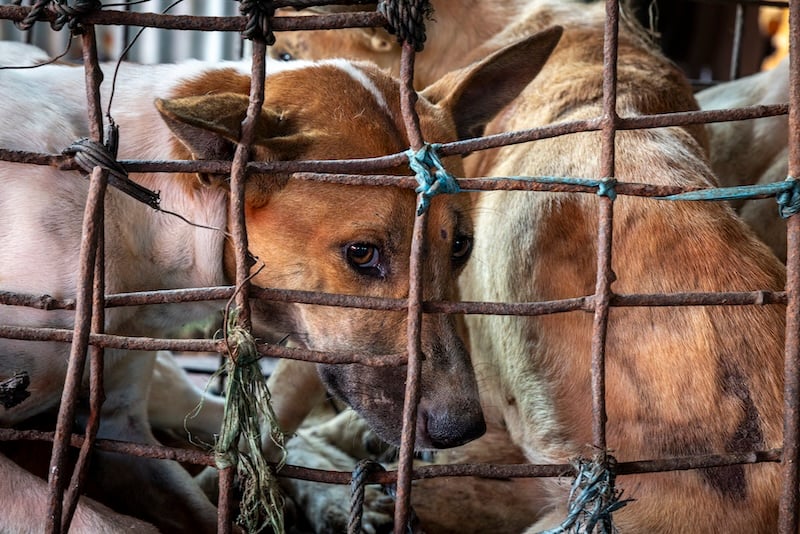A young elephant seal was languishing on a beach in California with a plastic packing strip secured tightly around her neck, according to news. She was emaciated, likely because the plastic made it difficult to forage. It appeared to be killing her slowly.
Rescuers carefully approached, sedated her, and cut the strip from her neck. Her scars will likely remain, but she survived — not all animals are so fortunate.
Plastic pollution is found in or around animals across the globe — from the necks of seals to the lungs of cats and dogs.
One of the issues with plastic is that it can last for hundreds of years before decomposing. Yet, it never really breaks down — it just turns into smaller pieces (called microplastics when they’re under five millimeters long) and remains a threat to wildlife.
Often, plastic debris finds its way into the oceans – where whales, sea turtles, sea lions, and other sensitive animals live.
Oceans, Marine Animals & Plastic
According to a study published in Nature, endangered blue whales consume approximately 10 million pieces of microplastics per day — primarily by eating krill that already contain microplastics.
Whales are also consuming larger pieces of plastic – as was seen in the tragic case of a sperm whale found dead on a beach in Scotland with over 200 pounds of plastic waste in his stomach.
Plastic is so pervasive in the oceans that scientists have found a shocking number of hermit crabs using plastic litter in place of shells. Tragically, plastic containers have entrapped and killed hermit crabs who cannot climb out of them due to their smooth texture.
Ocean currents can also bring litter to protected areas – including a marine reserve in Hawaii where endangered Hawaiian monk seal pups live. When a clean-up crew dedicated 24 days to removing litter from the site, they collected over 94,000 pounds of plastic waste.
Unfortunately, the amount of plastic in the oceans is rising. There are already an estimated 171 trillion pieces of plastic in the oceans – and that number could almost triple by 2040 if we do not reduce the amount of plastic we produce, according to scientists.
Wildlife & Plastic
It’s not just marine animals who are dying after consuming plastic. A bear in Telluride, Colorado was found to have consumed so much litter – including plastic waste – that he struggled to walk and was seen foaming at the mouth. In the end, wildlife officials made the difficult decision to euthanize him.
Bears, birds, and other land animals are also at risk of suffocating or starving to death because of the world’s plastic problem. These deaths may not be caused directly by a human hand, but they are directly linked to human activity.
Additionally, terrestrial animals may be exposed to microplastics by eating contaminated prey.
Farmed Animals & Plastic
The world’s plastic problem is increasingly affecting animals raised for food. In Kenya, a cow was discovered to have eaten over 75 pounds of plastic.
Similarly, the abundance of waste and lack of forageable food appear to have caused sheep and goats in Ethiopia to consume an alarming amount of “foreign bodies” — primarily plastic bags.
The problem extends to microplastics as well. One study in the Netherlands found microplastics in farmed animals’ blood, milk, and meat. Another study found microplastics in the lungs of fetal pigs. Even honey and eggs have been found to contain microplastics.
Dogs, Cats, & Microplastics
Animal companions aren’t immune to microplastics either – including cats and dogs, who share our homes and our daily exposure to plastic.
Dogs may be vulnerable to potentially harmful chemicals through plastic chew toys, according to research that explored how BPA from chew toys leeches into dog saliva.
Another study found microplastics in several internal organs of cats and dogs.
Microplastics were also discovered in cat and dog food and their feces, according to a study done in New York. The research found a significantly greater concentration in the feces than in the food, meaning cats and dogs may be inhaling or coming into contact with them in our homes.
Since microplastics are pervasive in the air, it seems likely that our beloved animal companions are experiencing constant airborne exposure.
How Harmful Are Microplastics?
While scientists are not yet sure how dangerous microplastics could be for animals, emerging studies are not painting a positive outlook for humans.
It is possible that ingesting, inhaling, and coming into physical contact with the chemicals in microplastics could negatively affect several aspects of human health – including neurotransmitter balance, which could potentially impact brain function.
It has also been suggested that microplastic exposure may be linked to DNA damage, reproductive concerns, and developmental toxicity – although studies on microplastic exposure consistently warn that it is too early to truly understand how exposure impacts human health.
However, if these are the suspected consequences of microplastic exposure for humans, how severe could the effects be in nonhuman animals?
One thing is clear: humanity’s increased production of plastic is destroying the planet and killing animals.
How Can We Fix the World’s Plastic Problem?
Recycling is not enough to save animals from plastic. It is not a material that can be effectively recycled, and it may even wind up in landfills where the pollution may hurt or kill animals.
What we must do is dramatically scale down the amount of plastic we produce globally.
As individuals, we can urge legislators to support efforts to ban plastic when possible and take steps to reduce our personal use of it.
Choosing natural, cruelty-free materials instead of plastic – such as stainless steel, glass, bamboo, and cotton – is also a smart way to minimize exposure to microplastics. Additionally, limiting the amount of plastic in our homes may decrease our companion animals’ exposure.
Plastic is a human-made problem and requires humans to act decisively to solve it. Animals across the globe are counting on us.

